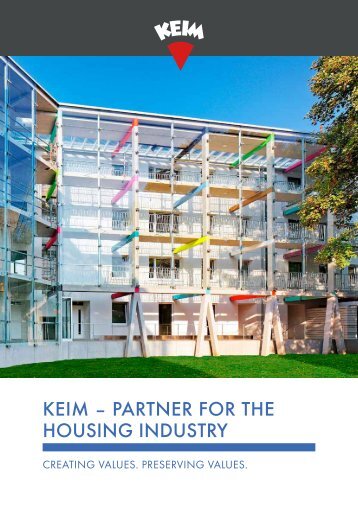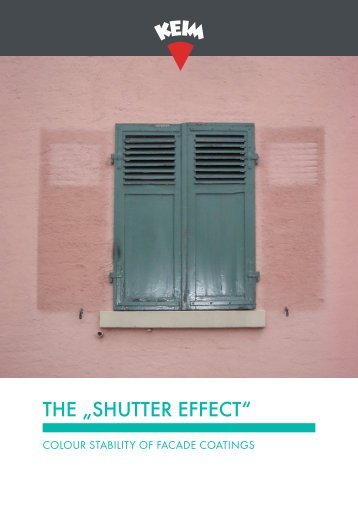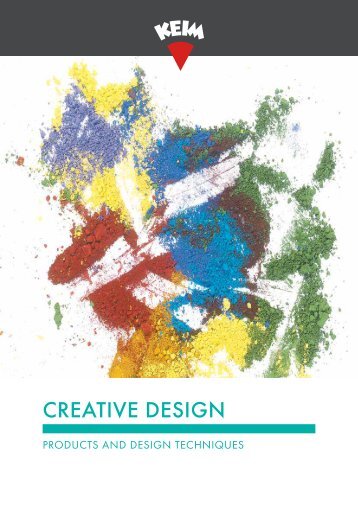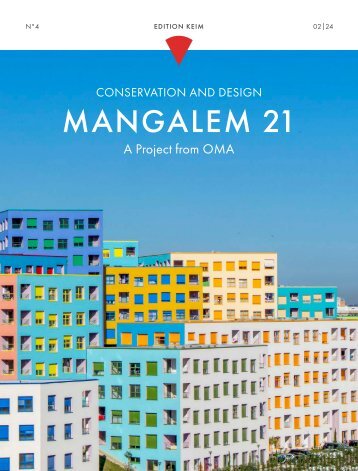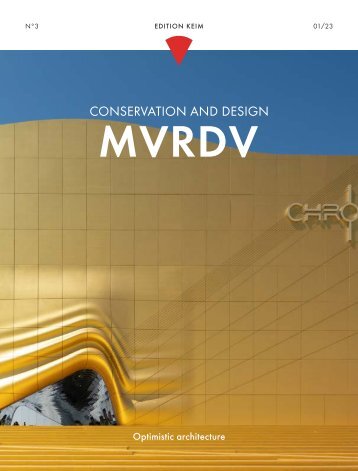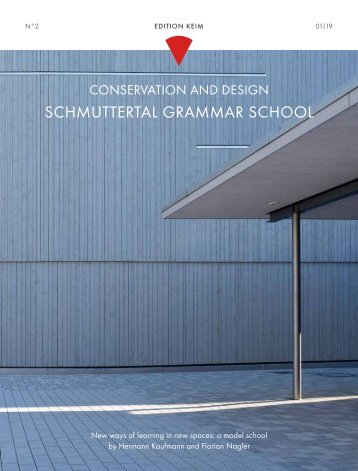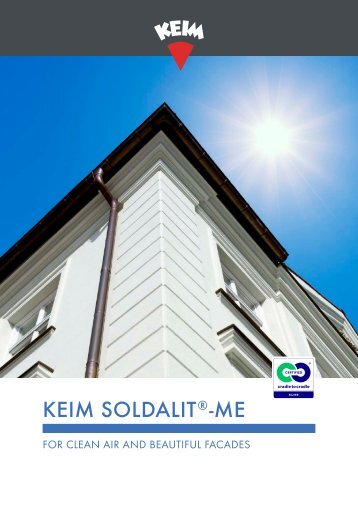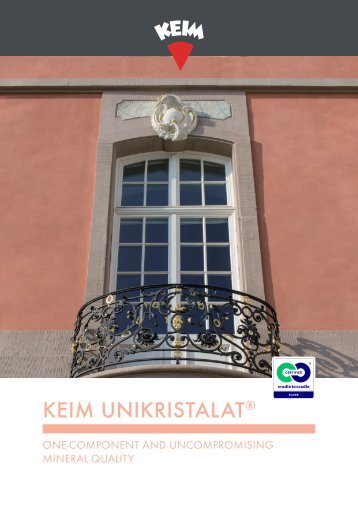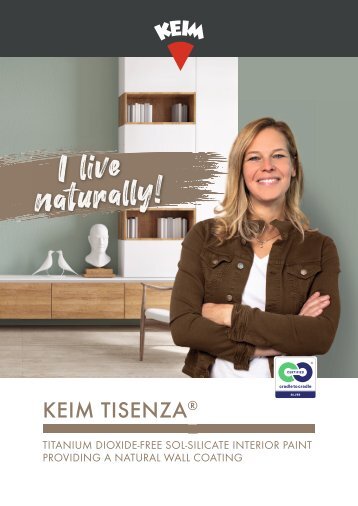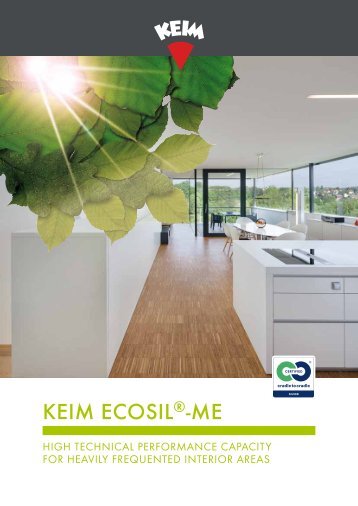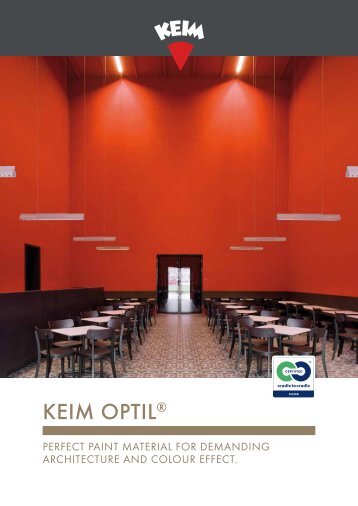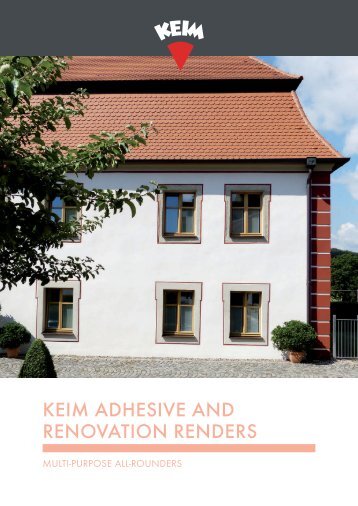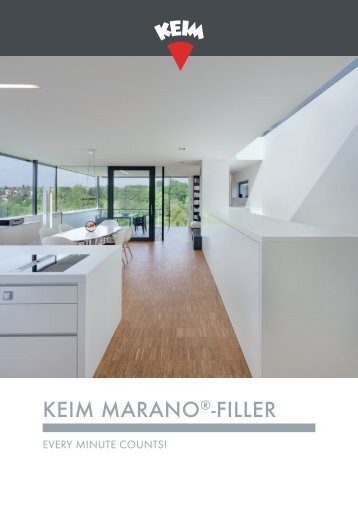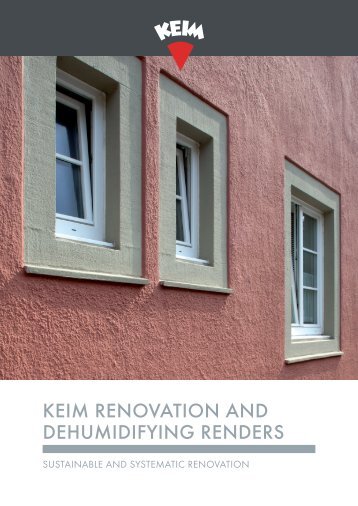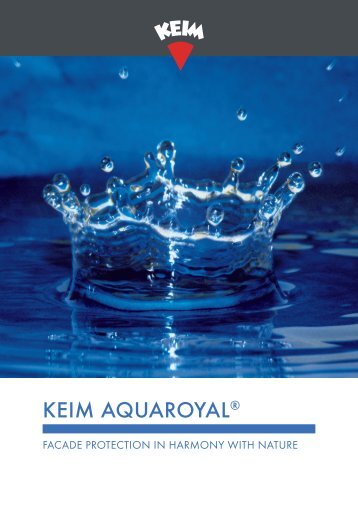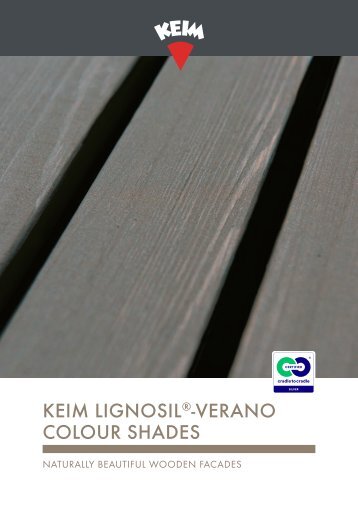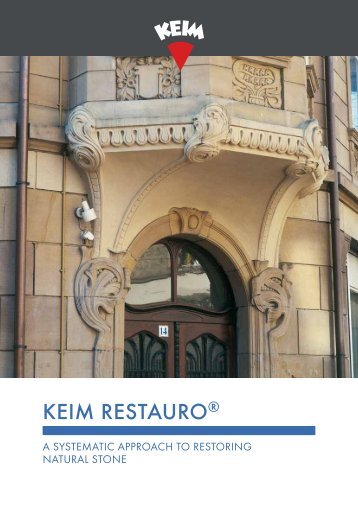platzhalter

KEIM "The shutter effect"
T H E "SHUTTER EFFECT"
T H E "SHUTTER EFFECT" – COL O U R ST A B I L I T Y OF F A C A D E CO A T I N G S 13 COLOUR RESISTANCE – WHAT DO PAINTS ACTUALLY DO? Facade with clearly visible colour changes in the areas of dismantled shutters. FIRST SYSTEMATIC INVESTIGATIONS INTO COLOUR CHANGE There is no such thing as perfect colour stability, but there are still huge differences in the behaviour of coating products, something which practical experience teaches us time and again. If realistic statements are to be made, the only solution is outdoor testing in a true to life situation. The „iLF Forschungs- und Entwicklungsgesellschaft Lacke und Farben mbH“ (= Institute iLF for R&D of varnishes and paints) has carried out comparative outdoor weathering tests over eight years on five different exterior paints with different types of binder and assessed them in relation to colour change. The parameter investigated was the colour difference of the individual coatings after completion of eight years' weathering in comparison with an unweathered reference sample which had been stored in the laboratory protected from light and moisture. The assessment or measurement of colour difference also included an evaluation of pigment changes, binder changes, soiling and plant growth. Test products specified were a pure, two-component silicate paint, a silicate emulsion paint, a (silica-)sol/ silicate paint, a lotus effect silicone paint and a pure acrylate exterior paint. The particular products tested were deliberately selected to be of the highest quality in their particular category. The colour shade selected was an intense blue (NCS S 2050-R80) because blue shades are particularly sensitive to weathering, and the human eye is particularly good at and sensitive in discriminating colour differences in the blue/grey range. Parallel outdoor weathering tests were carried out to DIN EN ISO 2810 in two different climates, one the industrial climate of Magdeburg and the other the rural climate of southern Bavaria. In this way, climatic conditions could also be taken into account, so additionally ensuring the general validity and practical relevance of the results. Both visual and instrumental methods were used for testing. All test methods were based on generally recognised standards. Left: 8 years of outdoor weathering test (2001-2009), “iLF Forschungs- und Entwicklungsgesellschaft Lacke und Farben mbH“ in Magdeburg
- Page 1 and 2: THE „SHUTTER EFFECT“ COLOUR STA
- Page 3: COLOURS IN COLOURFUL Colours change
- Page 6 and 7: MINERAL PIGMENTS: RESISTANT AGAINST
- Page 8 and 9: KEIM’S SILICATE PRINCIPLE: UNEQUA
- Page 10 and 11: KEIM’S SILICATE PAINTS - FOR CLEA
- Page 14 and 15: OUTDOOR WEATHERING TESTS OF FIVE EX
- Page 16: HALF-TIMBERED HOUSES SCHWÄBISCH HA
- Page 19 and 20: D E R FENSTERL A D E N E F F E K T
Inappropriate
Loading...
Mail this publication
Loading...
Embed
Loading...
GENERAL INFORMATION
SPECIAL TOPICS AND THINGS TO KNOW
CONSERVATION AND DESIGN
INFORMATION FOR BUILDING OWNERS
EXTERNAL PAINT SYSTEMS
INTERNAL PAINT SYSTEMS
MINERAL STUCCOS AND RENDERS
ETICS
WOOD COATING
CONCRETE REPAIR AND PROTECTION
© 2022 KEIMFARBEN GMBH





